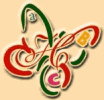(AN EXHIBITION)
 e
kindly invite the visitors of the Hall of Hungary at
the Frankfurt Book Fair to the exhibition of a classic Hungarian
playwright and writer of the last century.
e
kindly invite the visitors of the Hall of Hungary at
the Frankfurt Book Fair to the exhibition of a classic Hungarian
playwright and writer of the last century.
Background: the Tragedy and its history
Until the present day, apart from Sándor Petőfi, Imre Madách is the most recognised personality of the Hungarian history of literature throughout Europe. The Tragedy of Man had already been performed on the greatest stages of the world, in Germany in Frankfurt, Hamburg and Berlin; its text became known in thirty languages. It was translated into German in 1865. The issues and dilemmas raised in this play of Madách are universal. It is no wonder that they captured the imagination of such classic playwrights as Dante, Milton, Goethe, Byron, Shelley, Hugo or Ibsen.
The Tragedy of Man is regarded as the top-ranking, most frequently played piece of the Hungarian theatres. Madách had written it in the form of a dramatic poem, which was one of the most fashionable forms at the time of Romanticism. The piece was conceived between 1859 and 1860, and it was first published as a book in 1861.The premiere took place in 1883, after the death of the author. The greatest play of Madách is referred to as the 'poem of mankind' but it is called even more frequently as 'The Tragedy'. It is a comprehensive work of art reflecting the 19th century despite its language, which may now appear slightly archaic. Nevertheless, its images and ideas prove to be modern. The piece reflects the framework of Madách's philosophical views, his overall understanding of history and provides a summary of his life-experience. The play does not offer any solution, it does not promote any school of thought or ideology. The main characters - Adam, Eve, and Lucifer - are constant players in the plot and the ideas and historical ages change around them in chronological order.
Madách guides his reader-spectator, scene by scene, through the entire history of mankind beginning with the Creation; he describes the social structure and ideological tendency of each period. The constant follower and tempter, Lucifer, knows his job, he flashes pictures of the bloody reality and the false desires to Adam and Eve. Each of their journeys ends up in failure and disgust. The dramatic poem would end in near-universal disillusionment when Adam - with a gesture of self-destruction - prepares to cast himself down into the abyss, but Eve's announcement of her pregnancy opens the way towards the unknown future again. Life is victorious, but has no definite aim, the aim is the struggle, the aim is life or subsistence itself.
The Tragedy of Man - whether we read it, watch it on stage or present it by exhibitions or pictures - embodies an intellectual challenge for those getting acquainted with it. The play is a challenge both on an intellectual and philosophical level. We are all in its centre of attention: the Tragedy does not analyse the faith and future of just one nation but that of entire mankind. It touches upon the dilemma of the decision between the self and the community, the struggle between the ideal and the real: the fight of the intellect and the matter. And as such, it attempts to make us understand - in the most illustrative manner - Dialectics itself.
The Exhibition
The presentation of The Tragedy of Man gives the essence, the spectacle of the exhibited material. As an opening to the show we provide some tableaux presenting the life of Madách and the significant historic era he lived in. The years of his youth are connected to the Pest-Buda of the 'Refom Age' as well as to Madách's real life-substance, the world of the noble estates and mansions of the countryside. His involvement in the revolution and war of independence of 1848-49 and the following calm years, which were increasingly fertile for literature, are important episodes of the events leading to this great work. Therefore, it is unavoidable to reflect on them. This so called preparative or introductory part accounts for not even one third of the exhibited material. Reproductions of scenes, buildings, portraits, drawings of Madách and authentic objects make the atmosphere of the last century perceptible.
Madách's dramatic poem is built upon 'scenes' rather than acts. Within the tight possibilities offered by a line of boards, the exhibition in Frankfurt attempts to reproduce the scenes by various spectacular elements (illustrations to the text, some models, costumes and artistic photos of famous theatre performances). It is also our intention to show - through authentic documents - the literary and historic 'background-material' that inspired the creation of the piece: a collection of original editions of books with philosophic, scientific, literary and historic themes affecting Madách will be on display. The biggest help concerning the visual reproduction of The Tragedy of Man for the director of the exhibition is that being a stage play, it gives inspiration to countless artists, including representatives of literature, fine arts, theatre and photography.
The directors of the exhibition reckon that the well-known events of universal history - which are represented in the show by effective and conspicuous motives - will self-evidently provide a grasp for the visitors. Hopefully they shall encourage openness even in spectators who, in the beginning, are just marginally interested in the topic.
In order to make the exhibition about The Tragedy of Man memorable, on leaving, visitors can take a souvenir: they may strip off one of those scraps of paper aligned on the last board. Each slip contains, in various languages, one of the lines of the Tragedy that became an adage by now.
 |
Frankfurt '99
Non-profit Organisation,
Budapest 1054 Báthori u. 10. Fax: +(36) 1 269 20 53 E-mail: frankfurt_99.kht@mail.matav.hu |
|